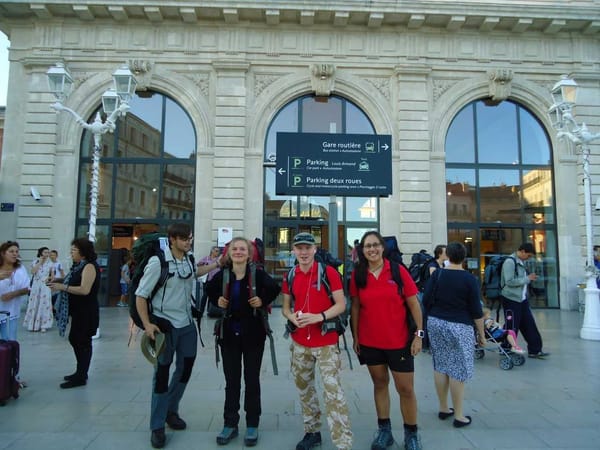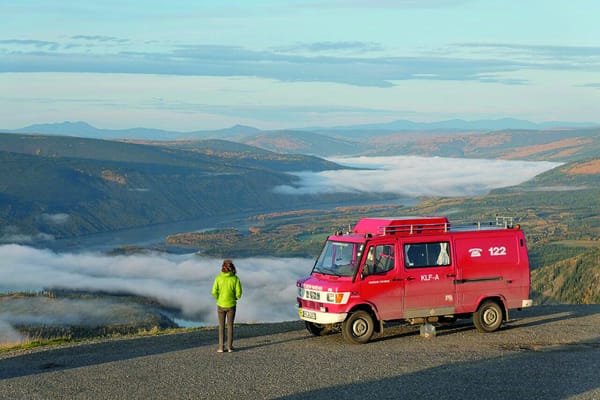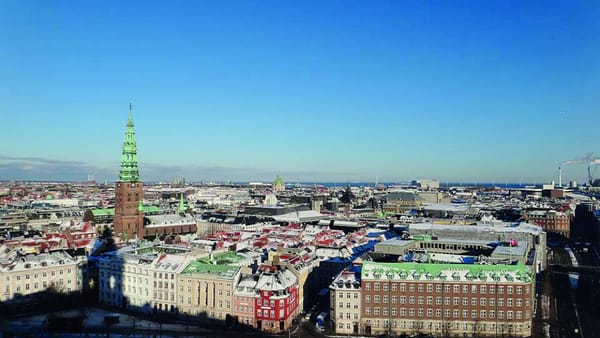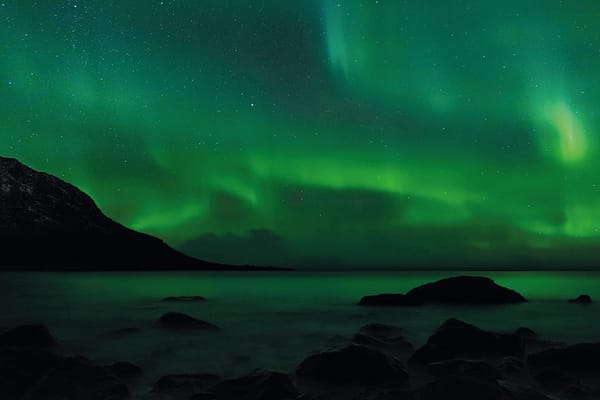Further adventures on the toughest trail in Europe
Our last issue featured the story of a group of geologists who completed GR20, the toughest trail in Europe. This week Georgios Chatzitheoklitos shares more of their unforgettable experiences and the challenges they faced whilst on the trip.

Day One: Stage 1A
On the first day we began early, waking up at 5:15am. Kindly driven to our starting point in a small town named Calenzana by our host from the night before, we were nervous but eager to set off. We were all very silent during that drive, contemplating what lay ahead of us.
Setting off at 6:45am, we quickly climbed up, reaching our first peak at 10am. Our spirits were high, and we thought we were in for an easy day. But with 1550 metres of ascent, the next part of the stage ramped up the incline, and several sections of scrambling followed, with infrequent assistance from chains.
Upon arriving at our second peak, the D’Ortu Di U Piobbu refuge was in sight, and it proceeded to taunt us for the next hour as we contoured our way around the edge of the valley towards it. From the distance, the refuge appeared to sit impossibly on the mountainside – as though perpetually sliding into the valley far below.
Everything we needed was on offer. Once we’d had a bitingly cold shower followed by a hearty dinner of mushroom soup and lentils, we felt more than ready to sleep. That is everyone except Harry, who felt the need to stand vigilant, wearing nothing but his underwear as the freezing mountain air washed over him. It was our first evening on the trail, and we were treated to a stunning sunset, overlooking the small village we’d left behind earlier that morning.
Day Two: Stage 2B
After a luxurious lie-in, we awoke to the ringing of our alarms at 6:30am. After the girls had finally got a grip on how to disassemble their tent, and we had dealt with the complex task of hunting down Georgios, whose porridge decided to take all morning to cook, we were ready for the set-off, only half an hour later than planned. Having previously tackled a day of relentless climbing, Max selected a low-level route for day two not to exert ourselves too much for the gruelling days ahead. The route wound its way through the forest to the valley floor, where we were to ford what we’d read was a raging torrent. It turned out to be a dry river bed, with the trail having not seen rain in over four months.
After lunch, we began the climb up a stony trail which frequently opened up onto ledges with stunning views. The excitement of crossing a rather bouncy suspension bridge was soon mitigated by a sudden and steep climb over a bouldery path through the forest. After we passed a seemingly endless stream of Germans as we were climbing the final hill, suddenly we saw a helipad jutting off the mountainside and, shortly after, the Refuge de Carozzu, our accommodation for the night. On arrival to the refuge, we proceeded to finish the cognac bottle Georgios had been carrying with him. One of the French hikers promptly commented “Euh, you English people with your cognac…” Upon speaking to the other trekkers, we were somewhat horrified to hear about a painful journey over the top of the mountain involving many chains and scrambles, and were relieved we’d chosen the lower route on this occasion.
Day Three: Stage 3
On day three, the guardian of the refuge told us a storm was imminent and recommended that we had a 6am start for the hike to Ascu Stagnu. So we packed up in the dark and set off with our head-torches. The 5am alarms were worth it, as due to minimal light pollution we could see the most stars we had ever seen, and we caught a full moon rising between the peaks we were about to climb. The day involved some technical climbs, and a large fraction of the 860 metre ascent involved climbing and scrambling as well as big rock slabs and chains that we used to hoist ourselves up. We made good time on the way up, stopping only when we came across a couple of British hikers who told us excitedly that there was signal where they were stood. Glad for a break, we took the opportunity to tell our families all was well before plodding onwards to the top. Here, for the first time, we met a hiker walking in the opposite direction, from south to north, and eagerly asked him how his legs were as he was nearing the end of his GR20 experience. His reply was rather discouraging: “Fucked, absolutely fucked!”
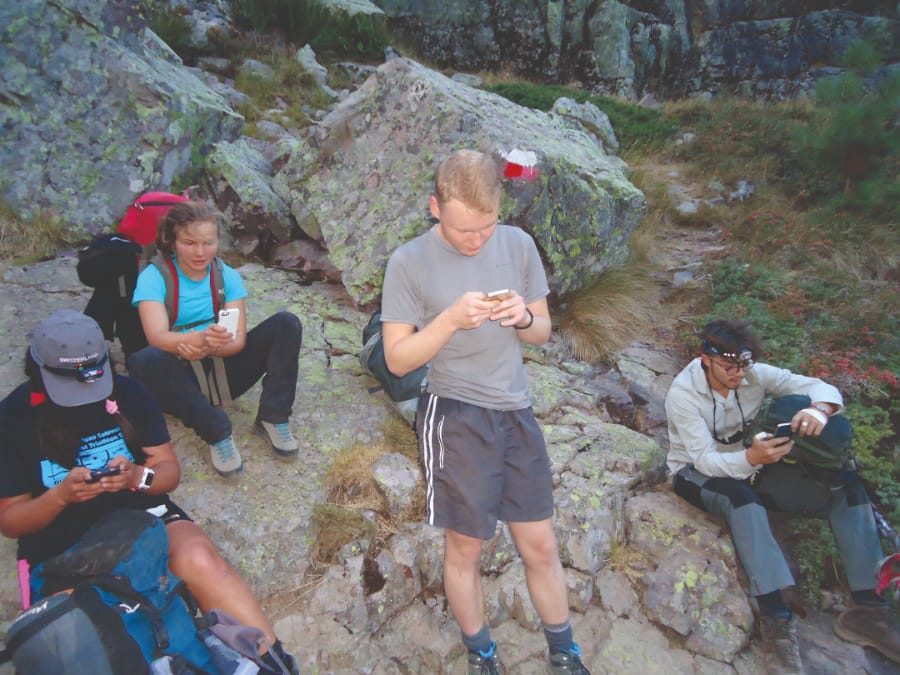
The descent was just as steep, if not steeper, than the ascent – hard on our knees and slow moving. But with the entire day being only 6km in total, we were at the refuge before midday and had all afternoon and evening to get to know our fellow hikers from all over Europe. The storm we’d been warned about hit in the evening, just as we were heading to bed, so we opted for a dry night in a refuge dormitory.
Day Four: Rest day
When we woke up at 5am, we were disappointed to discover that there was another storm due and it wouldn’t be wise to hike that day. Given that this stage was the one in which seven hikers were killed in a thunderstorm in 2015, we respected the mountains and stayed at Ascu Stagnu for another day, resting our legs. A military medical vehicle arrived in the evening and, at first, we wondered whether something had happened to the small group of hikers that had ignored the warnings and headed out anyway. But shortly after about 80 military personnel poured into the showers, which tremendously increased the time it took the girls to brush their teeth. We discovered that they were Belgian paratroopers hiking in the Northern GR20 as part of their physical training.
Day Five: Stage 4
We were very disappointed to wake up to yet more rain that morning but, with a good forecast for later, we set off at 6am, getting an hour’s head start on the Belgian paratroopers. It was a very miserable ascent: although we thought the rain would stop fairly promptly, it taunted us all the way up, making the rock slippery and harder to climb. Fog descended, obscuring our view to only ten metres, and, at the maximum height of 2607 metres, we were cold and lost the feeling in our hands, even with all our layers on.
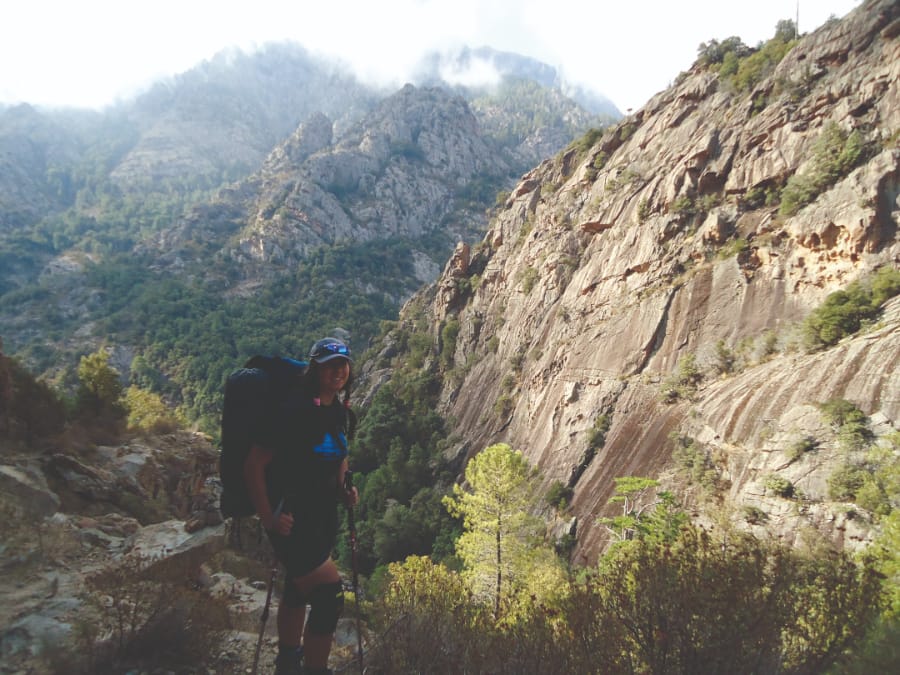
At times, we doubted whether we should be hiking in these conditions but just before 11am we reached the shoulder of Monte Cinto – the highest point on the GR20 trail. We sheltered from the wind for a quick break, disappointed that the clouds were obscuring the beautiful view that we’d been promised. However, we had a stroke of luck: just before we were about to start the descent, the clouds suddenly opened up, and the scenery was even more spectacular than we’d hoped! As the sun came out, Georgios, Diane, Carla, and Harry couldn’t help but be tempted to summit Monte Cinto – not strictly a part of the GR20 trail but an additional 2-hour excursion that our guidebook recommended to reach the highest peak in Corsica.
Unfortunately, Max was too cold from the wet ascent, so he decided to start the descent to the refuge whilst the rest of us left our bags and continued climbing up. It was well worth the extra climbing! The views from the summit (2706m) were truly spectacular, and we couldn’t help thinking that this would be the best moment of the expedition. We left our mark on the summit by signing the book at the top as ‘RSM miners 2017’ and shouting the RSM chant at the tops of our voices. We were on top of the world!
By the time we’d re-joined the GR20 for the descent, the Belgian paratroopers had caught up, but proved to be rather unimpressively slow and caused traffic jams on the otherwise quiet route down. So much for them walking around topless in camp and showing off their muscles, which made our boys feel insecure…
Further adventures: In the next article: the members split up, and the reason behind Diane’s heavy rucksack is revealed! So stay tuned.

